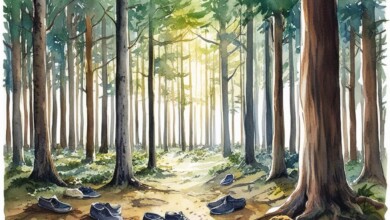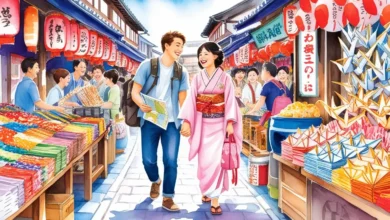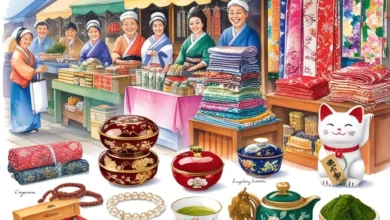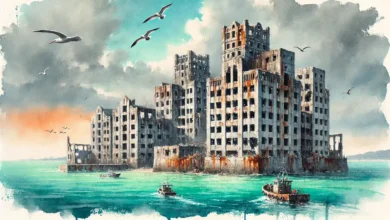In Wajima City, Unseen and Beautiful Sights
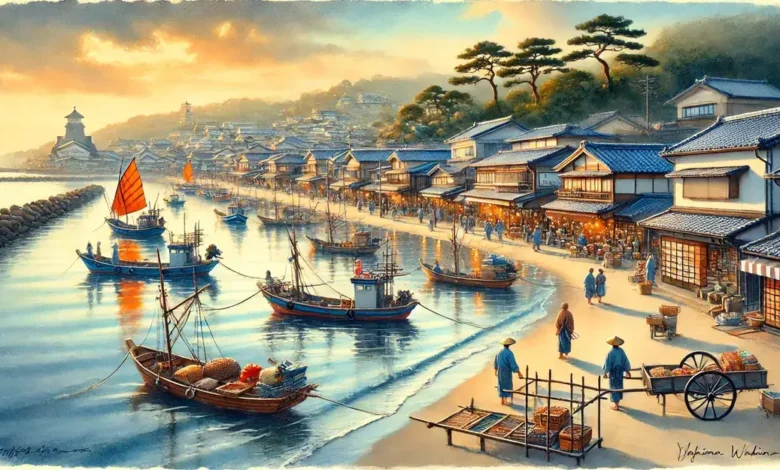
Peaceful fishing villages and unique cultures are hidden in the rustic land of Wajima of the Noto Peninsula.
Where is Wajima City?
It’s on the top left corner of the Noto Peninsula. This city is in Ishikawa Prefecture, Japan. It’s a peaceful place with fishing villages and streets made of small stones near the sea.

There’s also a very old market in Wajima. It’s been there for over 1,000 years! People sell things like fresh fish, dried seafood, and handmade items.

Even though Wajima only has about 30,000 people living there, it’s one of the bigger towns in the area. Because it’s far away and doesn’t have many people, some think it’s just a quiet countryside.
But that’s not all! For a long time, this charming fishing village has been home to a big religious group. It’s also an important place for sea trade and making things. It’s especially known for its lacquerware, which is famous not just in Japan, but all over the world.
The center of lacquer craft on the Noto peninsula
Wajima City is known for its special craft, lacquerware. We don’t know exactly when people started making lacquerware in Wajima, but there are signs that it started around the 1400s.
Wajima has lots of elm and cypress trees, which are great for making the wood parts of lacquerware. It also has gardenia trees, which give a special resin called urushi. Even when other places in Japan started using fake resins during a war in the 1900s, Wajima kept making lacquerware the traditional way.

Making lacquerware in Wajima takes a lot of time and hard work because there are many steps. But the finished pieces are very beautiful and strong.
The Soji Temple, which is about 20 minutes away from the city, has helped make Wajima lacquerware popular. This temple, founded in 1321, is the main temple of the Soto sect, a big group of Zen Buddhism with over 15,000 temples all over Japan.

Monks from all over Japan came to Soji for training and teaching. Many of them fell in love with the beautiful lacquered decorations in the temple and told people back home about them.
After people all over Japan learned how beautiful and strong Wajima lacquerware is, they wanted to buy it. Small merchant ships called “kitamaebune” carried Wajima lacquerware from Hokkaido to Kyushu, and even to Osaka and Kyoto.
From the 1600s to the late 1800s, these ships bought and sold local items at each port they visited, including Wajima. That’s how Wajima lacquerware got to places like Kyoto and Tokyo. Its simple beauty goes really well with the subtle changes of Japanese food throughout the seasons.
Kiriko Lantern Matsuri in Wajima
Have you heard about the Kiriko Lantern Festival in Wajima? It’s a big summer event that happens from July to October. Wajima’s special lacquerware is used to make the Kiriko lanterns for the festival. Every town on the Noto Peninsula has its own festival and they all try to have the biggest and most exciting one.
The festival is a way to say thank you to the gods for good crops and lots of fish. It’s also a great way for people in the community to come together.

On festival days, people invite their family and friends to their homes to share homemade food and drink sake, a type of Japanese rice wine. This is a tradition of being kind and spending time together that has been passed down for many generations. Tourists are also welcome to join the festival. If you visit at a different time of the year, you can still get a feel for the festival by visiting the Wajima Kiriko Museum of Fine Arts.
Address: Wajima Kiriko Fine Arts Museum, 6-1 Marine Town, Wajima City, Ishikawa Prefecture.
The beauty of terraced fields
North of Wajima City is Shiroyone Senmaida, where terraced fields with distinctive farming methods have been recognized by UNESCO as an important global agricultural heritage.

There are more than a thousand small rice fields on a slope near the sea. Each field is very short and only a few meters long. Because the fields are small and the ground is rough, it’s hard to use machines to farm. So, every grain of rice has to be planted and picked by hand.
Local farmers and volunteers do all this hard work. They want to keep the special culture of Wajima alive. In the late spring, the fields are filled with water. When the sun sets, the water in the fields looks like thousands of mirrors.

